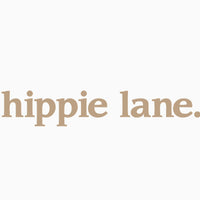Natural Colour Guide
Whether you're looking for a particular hue for cosmetic or food purposes, consider opting out of the traditional food colouring dyes and go for natural health boosting options.

Whether you’re looking for a particular hue for cosmetic or food purposes, consider opting out of the traditional food colouring dyes and go for natural health boosting options.
Dyes have chemicals and additives you don’t want near your skin or in your system. What’s so great about the beautiful world we live in is that there are so many natural elements that contain rich pigmented amounts of color that can easily be used to transform and make colour play completely safe and good for the environment.
Below are ways to achieve bright, bold and pastel colors (my obsession) using superfoods that will boost your health!

Blue
Over the last 12 or so months, all over insta, we’ve been wowed by the beauty of vibrant (or in my case, pastel) blue in healthy food recipes. Since then, we’ve seen a rise in beautiful blue hues in our food and we can’t get enough!
The colour blue can be obtained by using a supplement called E3 Live. I am so grateful to have had the support of Kerry Burke, who brought this amazing blue spirulina to the market, and has been supplying me with the superfood since my early days of #hippielanecolours experimentations.
E3 Live or Blue Majik is an extract from a sea botanical that is nutrient rich and dense. Similar to the sea plants and algae that are green, one of the main things that makes it different is this particular plant has a blue pigmented hue. This plant is otherwise known as blue spirulina which has a stunning natural blue pigment that the components produce. This comes in many forms, whether in capsules or loose powder, you’ll only need to add a bit to your mixture. A little goes a long way with this powder, and various shades of blue can be obtained.
I use it in my pancake mixture, my chia pudding, smoothies, and to colour my raw cakes and donut icing.
My tip is to start with a small amount first and add more as you go. Don’t be turned off by it’s odour, which does take a little time to get used to. In small amounts, the flavour and smell do not transfer to your food, thankfully!

Yellow / Orange
The powerful root turmeric has been used traditionally for years as a spice for cultural cuisines such as curry and while providing complex flavours to dishes, has been proven to support the body’s healing processes. With a natural vibrant yellow / orange hue, many traditional colour manufacturers deodorize turmeric and use it to create the color yellow.
I use Turmeric in powdered form, bio-curcumin to be specific, and find it works beautifully in adding colour to my recipes. Great news is, curcumin is the most important of a group of compounds called curcuminoids that are found in turmeric. In addition to providing the vibrant orange-yellow colour, curcumin has been the subject of thousands of scientific studies, many of which support its growing reputation as a potent anti-inflammatory medicine with therapeutic benefits for a wide variety of inflammatory conditions.
I use the powder in combination with other herbs for my Golden Mylk lattes, and add a little to coconut yoghurt for flavour and colour. I also use it in savoury and sweet dishes to add a pop of colour.
Just like the other superfood powders on this list, a little goes a long way so you don’t need to worry about the spicy taste in your sweet dishes – you will barely notice if you use a modest amount.

Purple
The vibrant pigmented powder that is derived from blueberry has a natural purple color. The powder is extracted straight from the antioxidant fruit and finely ground. It can be added to boiling water with a pinch of baking soda to thicken its consistency. If you’re attempting a more liquid dye, water is the only ingredient you’ll need to incorporate. Start with a little and add as you go.
The health benefits associated with blueberries are so amazing you’ll feel great about using it to colour your food. A little-added bonus of trace antioxidant power is something we could all use.
Again, you don’t need a lot to colour your food, I always advise to start with a small amount and add more as you go to reach your preferred hue.
If you don’t have powder on hand, you can boil purple cabbage and use it’s syrup to colour your food. I use the water of cabbage to colour my rice noodles to wrap within my rice paper rolls and to add to my buttercream icing.

Pink
A natural source of sweetness, beetroot powder can be used to make pink dye. This is the perfect answer to all of those birthday cupcake nightmares. Especially when the perfect pink frosting would make all the difference in the world but using artificial food colouring is the last thing you want to do.
Just a pinch or two of beetroot powder, more for a darker pink and sweeter taste, is exactly what you should have on hand. Often used to sweeten the healthy pressed juices that have recently become so popular, beetroot’s color is a real winner and shines through as a fun option for natural food dye.
If you don’t have access to the powder, don’t despair – you can boil beetroot and use it’s syrup to colour your food. Perfect for noodles, icings and smoothies.

Green
Another great option that provides amazing health benefits is Matcha green tea. With this divine green tea, there are no worries about ingesting traces of chemicals and additives in dyes. You can feel good knowing you are using natural, organic ingredients from the earth while tasting it’s deliciousness in your food.
Matcha has a light green color that translates well to a dark green when activated. This lusciously pigmented tea will do the trick and transform food or homemade cosmetics into just the right colour.
I mix matcha with hot water to achieve a liquid consistency before adding to my breakfast foods, cake, smoothie or matcha latte.

Grey / Black
Activated Charcoal, a recently discovered detoxifier and natural cleanser that steps up the food colour game with its grey / black hue! Activated charcoal is great for the skin and teeth and is used to treat the symptoms of an upset stomach / food poisoning by absorbing the elements that cause the reaction. It’s completely safe to ingest and comes in supplement form.
I add a small amount of charcoal powder to water and make a paste before adding to my food. Suitable to use for savoury, sweet and breakfast foods, it’s brings a whole new element of fun with the addition of soft grey and black in food.

The days of only being able to achieve colours via traditional food colouring are done. There are so many fab superfoods, all of which can be used to transform your food to magical levels. Give them a go and get ready for a new found addiction.
T x

